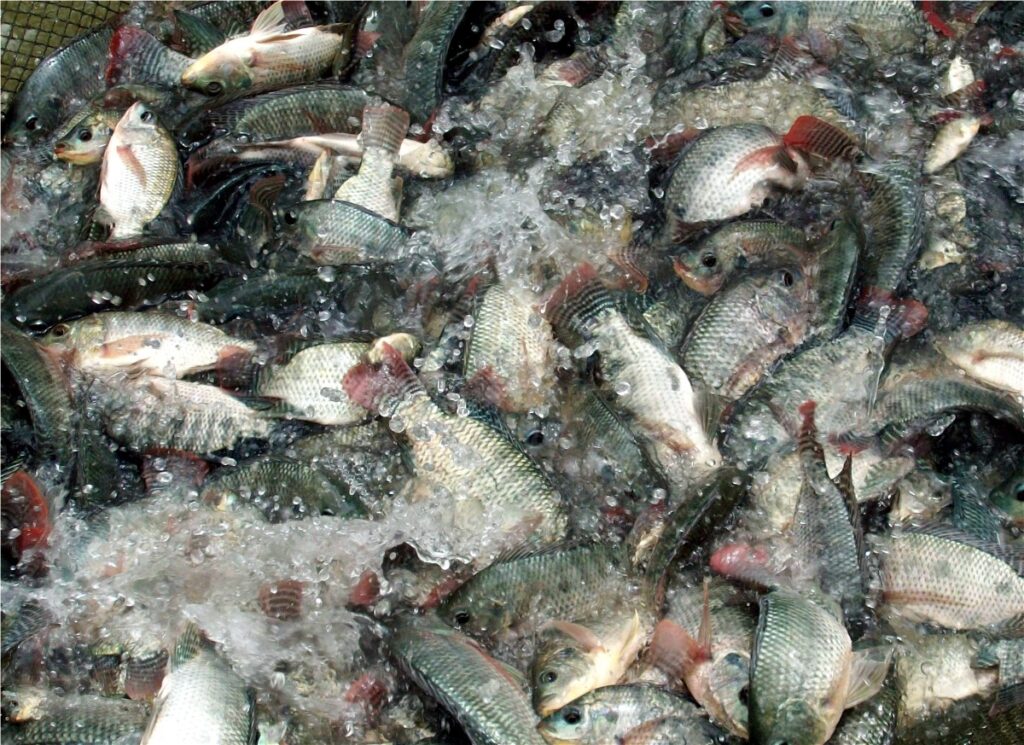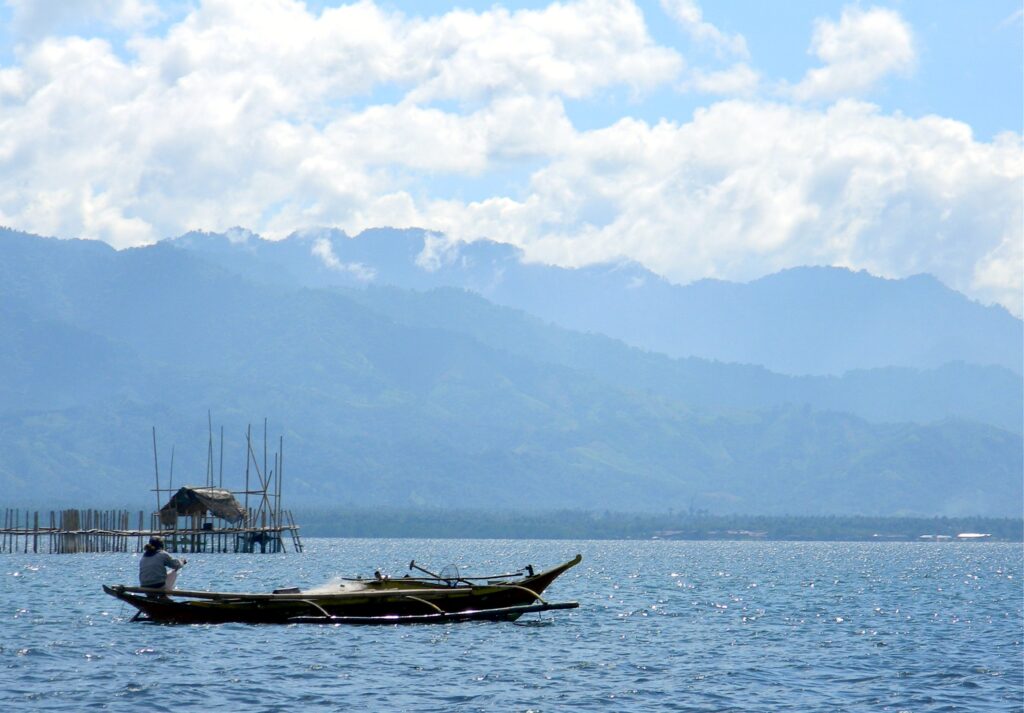Text and Photos by Henrylito D. Tacio
When it comes to agriculture, perhaps the most neglected sector is the fishing industry. While there are several attached agencies for various sectors in the Department of Agriculture, there is only one for the fisherfolks: the Bureau of Fisheries and Aquatic Resources (BFAR). So much so that there was a clamor for the creation of the Department of Fisheries.
When she was still with the Senate, Loren Legarda filed Senate Bill No. 242, entitled “An Act Creating the Department of Fisheries, Providing for its Powers and Functions, and for other Purposes.”
The bill, Legarda explained, “seeks to protect and conserve the country’s fishery and aquatic resources within sustainable limits for the exclusive use and enjoyment of Filipino citizens, to accelerate the integrated development of the fishery industry, and to protect the rights of small and subsistence fisherfolks and fishworkers to preferential use of such resources.”
Fish is the second staple food of Filipinos, after rice. “Fish is the main source of protein for the Filipino,” Legarda said in her explanatory note. “An island nation, the Philippines necessarily depends, to a large extent, on its fishery resources for its food.”
As an archipelago made up of 7,107 islands, the Philippines enjoys the vastness of the oceans and seas surrounding its peripheral territories. The islands are “outlined by more than 18,000 kilometers of coastline, bordering roughly 70% of the country’s municipalities,” according to Legarda.

On average, every Filipino consumes 98.6 grams of fish and fish products each day, showed a study of the Food and Nutrition Research Institute of the Department of Science and Technology.
Through the years, fishing has been an important source of livelihood for Filipinos. “The fishing industry provided employment to about one million Filipinos or around 3% of the country’s labor force in 1998,” says the Philippine Statistics Authority (PSA). “Being labor intensive, municipal fishing generated 68% of the total employment, followed by aquaculture with 26% and the commercial fishing, 6%.”
The BFAR defines commercial fishing as the catching of fish with the use of fishing boats with a capacity of more than three gross tons for trade, business, or profit beyond subsistence or sports fishing.
Municipal fishing covers fishing operations carried out with or without the use of a boat weighing 3 gross tons or less. Aquaculture is the rearing and harvesting of fish, shellfish, and other aquatic animals and plants in inland waters like lakes, rivers, dams, and marshes.
In the past, the supply of fish wasn’t much of a problem. “The people have enjoyed the abundance of the Philippine marine fishery resources,” the PSA noted. “Ask the old fisherfolks how they culled their harvests. Many of them would say that fish sized with less than a foot rule will automatically be thrown back to the water. Back then, they even have the luxury to choose the most palatable fish among the wide variety of species thriving in a particular fishing ground.”
Those days were gone. Since the country’s population has grown significantly, the demand for basic commodities, including fish, has increased. The Philippines is now home to 108.1 million people, according to the World Bank.

“The demand for fish, both for food consumption and other uses, has increased correspondingly,” the PSA pointed out. “Consequently, many of the households from the coastal villages have made fishing as their source of livelihood.”
A survey by the Social Weather Stations commissioned by Oceana in 2017 found that 82% of Filipinos believe fish sold in markets are more expensive now compared to 10 years ago. Meanwhile, 54% of respondents said the size of fish has become smaller, and 55% said they found fewer fish varieties in local markets compared to a decade ago.
“Fish, which used to be among the cheapest sources of protein, is now more expensive than pork or chicken,” deplored Legarda, who is now a representative of Antique.
Where have all our fish gone?
“The increase in population coupled with the improved fishing technology brought stress to the country’s marine and coastal ecosystem, thereby affecting the fishery resource,” the PSA observed.
The majority of the fishing grounds in the country are overfished. Recent reports said that ten out of 13 fishing grounds are under intense fishing pressure. “Overfishing is the main issue, with today’s fishers ranging farther and trying harder to catch more – but there are more fishers and too few fish,” observes Gregg Yan, director for Communications for Ocean Philippines.
Take the case of sardine, one of the most commercially important fish species. “Overfishing was found to constrain sustainable development of the sardine industry,” said Dr. Reynaldo V. Ebora during the 12th Annual Meeting and Scientific Convention of Outstanding Young Scientists. “Declining production was observed since 2009. In 2011, a 50% decrease in sardine production was recorded.”
The tuna industry, which accounts for 12% of total fish production in the country, is not spared. “Due to its high economic importance, rampant cases of juvenile fishing have been reported, which led to decline in tuna stock,” Ebora deplored.

PSA has cited illegal fishing as one reason why the fish caught in the open seas were vanishing. “Illegal fishing is a major cause for the destruction of the coral beds in many of the country’s fishing grounds,” it said.
A document from the Cebu-based Coastal Resource Management Project (CRMP) said a good to excellent coral reefs can produce 20 tons or more of fish and other edible products per square kilometers annually.
The destruction of these reefs can greatly reduce fish production, marine scientists said. “Once destroyed, they produce less than four tons per square kilometers per year,” the CRMP disclosed.
The sustainable catch from a good reef over 10 years is about 200 tons of fish, while a destroyed reef is only 72 tons, it added.
“Fish kills due to the disposal of solid waste by the local population and discharges of chemical wastes by some manufacturing plants is also a serious concern that puts the country’s fishery resource in danger,” the PSA also mentioned.
Other factors contributing to the country’s fishery resource depletion include siltation and sedimentation of the water ecosystem due to deforestation, mining, and other human activities.
“Besides bringing in poisonous and toxic substances into the water, silts and sediments lead to the shallowing of the riverbeds killing phytoplankton and other aquatic organisms, which are responsible for photosynthesis activities,” the PSA explained. “Photosynthesis, aside from making up the food chain process, supplies the oxygen requirement of fish as well as the rest of living organisms in the ecosystem.”

As in the case of rice, when there is low supply, the solution is importation. When the country experienced a shortfall in fish supply some years back, it imported 17,000 metric tons of galunggong or round scad, mostly from China and Vietnam.
“Short-term imports may actually put long-term food security and fisherfolk at risk,” believes Atty. Gloria Estenzo Ramos, of the Oceana Philippines, an organization working exclusively to protect and restore the oceans. “The issues haunting fisheries management can only be solved through a more comprehensive and participatory plan.”
In the Philippines, there are four main laws governing the policy framework for the management of fisheries. These include the Philippine Fisheries Code of 1998 (Republic Act 8550) and its amendment (RA 10654); Local Government Code of 1991 (RA 7160); Agriculture Fisheries Modernization Act of 1998 (RA 8435); and National Integrated Protected Areas System Act of 1992 (RA 7856).
“The Philippine Fisheries Code is the primary legislation that sets out the overarching policies and objectives to be pursued in the management of fisheries,” Ebora explained. “It also sets the power to regulate municipal and commercial fisheries, aquaculture and postharvest activity, create fisheries reserves, protect fisheries habitats, and to impose sanctions.”
In support of fishery management policies, the Fisheries Code also “provides for the establishment of regulations addressing access to fishery resources and declaration of closed fishing seasons and catch ceilings for conservation and ecological purposes – based on available evidence.”
Filipinos may not be aware of what’s happening. Jeannyline T. Arriaga, from Bansalan, Davao del Sur, is a doting mother. She usually wakes up early in the morning to prepare breakfast for her two children, who are going to school. Generally, she cooks rice and fish.
However, Lately, she observes that the fish she usually buys at the public market has become scarcer. In fact, there are days when she could not find any that she buys another kind of fish. Her children complain because they don’t like the new fish she serves them.
Jeannyline also notices that if the fish she likes is available, they are becoming smaller. “They are not only getting scarcer but they are becoming expensive, too,” she points out.

